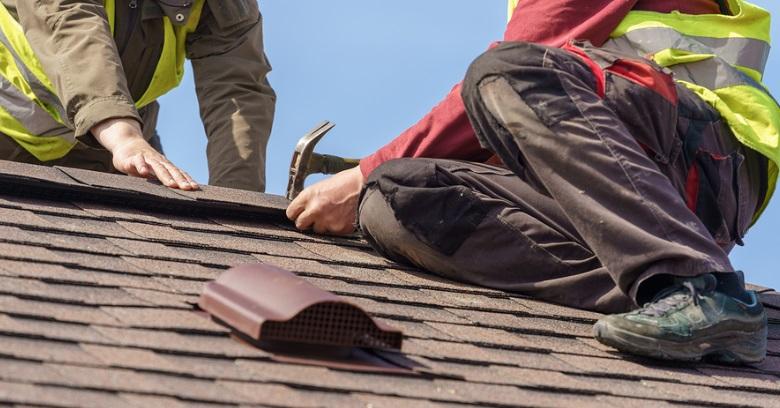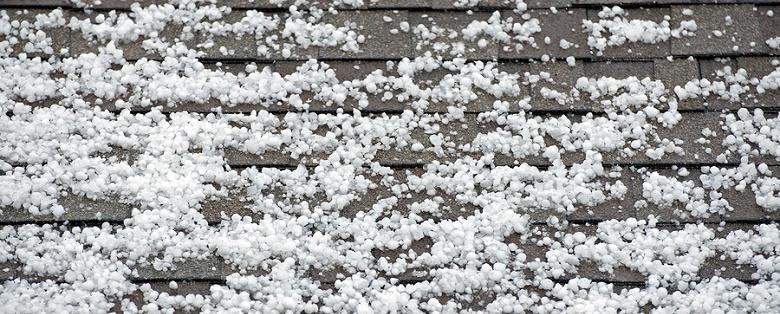Roof leaks are sneaky; small leaks can be deceiving, leading you to believe there is some time before you need to call a roofing service to get them out to take care of it.
While that may be true sometimes, there’s a higher possibility it’s more serious than you realize.
Even seemingly small leaks could reveal a problem much worse than you’d expect, one that ends up needing extensive roof repairs or even a roofing replacement.
Rather than ending up in that type of situation, inspect any leak you find a little closer before assuming there is plenty of time to get it fixed.
If you notice any of these signs, that leak is potentially serious and has likely been there longer than you think!
1. Water Stains or Spots
The top sign that you have a leak that requires the attention of a roofer and it’s been there for a while is the evidence of water stains on the inside of your attic or water spotting on the exterior of your house.
Stains on beams, flooring, and even the contents of your attic suggest an ongoing, sneaky leak that has evaded you for a while.
Spotting on the exterior of the house underneath the eaves is another indication of leaking that’s been happening for a while.
You might be surprised at the extent of the damage uncovered by a roofing contractor if the leak has been present for quite a while.
2. Damage Inside the House
Another big sign that you need to call a roofing company in a hurry is if interior damage appears like
- Buckling and peeling paint or wallpaper.
- Sagging or stained ceiling.
- Moisture or stains on the walls.
- Attic insulation that’s disintegrating.
- Other moisture-related damage.
all of which are a prime indicator that you’ve had a leak for some time.
This kind of damage does not happen overnight and should be remedied as soon as possible before it gets worse.
3. Mold, Mildew, and Other Growth
The presence of moisture in your home in spite of a fully-functioning HVAC system is another big indicator of a leak that’s been there for a while.
Unhealthy mold in attic corners or in the insulation as well as mildew on the roofing structure or other surfaces means there’s either water coming in from somewhere or you have a serious attic ventilation problem, both of which need to be repaired by a roofer.
If you see mold, algae, or moss growing on your roof or the exterior walls of your home, this is another sign that there is a moisture problem that needs correcting.
Untended, exterior moisture issues can lead to more leaking that can cause extensive damage both inside and outside the house.
4. Structural Damage to Roof or Foundation
A sagging roof or one that has shifted in any way is another issue that points to leaks that have been there for a while, long enough to allow the structural framework of the roof to soften and change due to rot and other water damage.
Sometimes the first indicator that your roof is causing the problem might be hairline cracks in the foundation if the roof has shifted or become too heavy from water absorption in places that you have no idea are getting wet.
5. Intermittent Leaks In Colder Weather
There’s nothing more annoying than an intermittent leak, especially if the leak is noticeable when the weather is above freezing but seems to go away when it’s below freezing.
This could mean that your shingles are suffering from a destructive condition called ice damming, which could lead to needing to have a new roofing installed.
Ice damming occurs when water gets under the shingles for whatever reason and then freezes, expanding in that small space and further lifting shingles so they leak even more.
If the problem isn’t noticed right away, it could result in widespread damage under the shingles and a very expensive repair.
Even the Little Leaks Can Be Serious
It’s easy to get fooled into thinking that a little bit of water in the attic, a small stain, or an intermittent leak is just a minor roofing problem that can be repaired later rather than sooner.
What you might not know is that the leak is bigger or has been there much longer than you realize, in which case there’s likely a lot more damage than you realize.
Look for these signs above that your leak is more serious than you think, then prevent more extensive damage by calling a roofer at the first notice of any leak at all!

